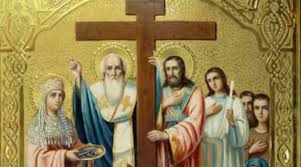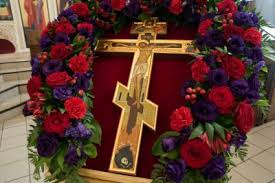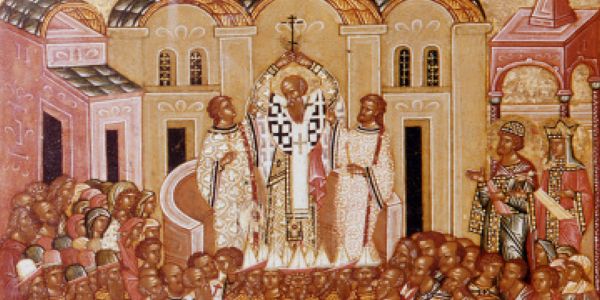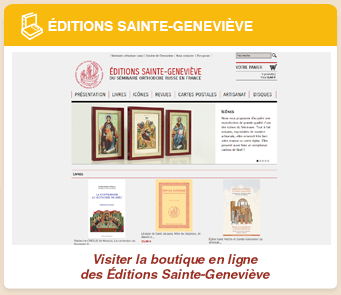|
Plateforme libre de discussion
|

À la fin du premier mois de l’automne, le 27 septembre, le monde chrétien commémore l'Exaltation de la Sainte Croix. Si pour le christianisme occidental cette journée est devenue au cours des siècles un simple souvenir, pour l'orthodoxie,
l'Exaltation est encore aujourd'hui une grande fête. En l'an 326, la Croix sur laquelle le Seigneur Jésus a été crucifié a été trouvée par l'Impératrice Hélène à Jérusalem.
En 629, après une captivité perse brève mais historiquement très importante, la Croix du Christ fut restituée à la Ville Sainte par l'empereur Héraclius. Les deux événements sont combinés dans la fête. Cela signifie que l'origine et la signification de l'Exaltation sont à la fois historiques et idéologiques. Cela reflète le fait que les chrétiens étaient autrefois persécutés et que le pouvoir de l'Empire romain lui-même croyait en Christ.
L'empire est devenu chrétien, a commencé à patronner l'Église et à protéger les chrétiens. Certains ont vu la grandeur dans la transformation de l'Empire romain en une puissance chrétienne, d'autres y ont vu une prophétie de défaite. L'écrivain, historien et Père de l'Église Eusèbe de Césarée (+340) était convaincu que la christianisation de l'Empire remplissait les promesses de la Bible. Dans son « Histoire de l'Église », et en particulier dans son « Éloge de l'empereur Constantin », Eusèbe a vanté l'Autorité impériale romaine chrétienne comme le nouveau royaume éternel de la Croix.
l'Exaltation est encore aujourd'hui une grande fête. En l'an 326, la Croix sur laquelle le Seigneur Jésus a été crucifié a été trouvée par l'Impératrice Hélène à Jérusalem.
En 629, après une captivité perse brève mais historiquement très importante, la Croix du Christ fut restituée à la Ville Sainte par l'empereur Héraclius. Les deux événements sont combinés dans la fête. Cela signifie que l'origine et la signification de l'Exaltation sont à la fois historiques et idéologiques. Cela reflète le fait que les chrétiens étaient autrefois persécutés et que le pouvoir de l'Empire romain lui-même croyait en Christ.
L'empire est devenu chrétien, a commencé à patronner l'Église et à protéger les chrétiens. Certains ont vu la grandeur dans la transformation de l'Empire romain en une puissance chrétienne, d'autres y ont vu une prophétie de défaite. L'écrivain, historien et Père de l'Église Eusèbe de Césarée (+340) était convaincu que la christianisation de l'Empire remplissait les promesses de la Bible. Dans son « Histoire de l'Église », et en particulier dans son « Éloge de l'empereur Constantin », Eusèbe a vanté l'Autorité impériale romaine chrétienne comme le nouveau royaume éternel de la Croix.
À son tour, Augustin d'Hippone pensait autrement. Dans son ouvrage « Sur la Cité de Dieu », Augustin a averti que les États et les empires sont transitoires, ce qui est le plus important en eux, comme dans les êtres humains : la vérité, la droiture, la vertu, les valeurs. En d'autres termes, la christianisation de l'Empire est une bonne chose. Mais tout bien terrestre est ambigu, peut être déformé. Le récit de Luc du procès du Seigneur Jésus contient un épisode très important avec une signification profonde (Luc 23:1-12).
Deux ennemis irréconciliables, Pilate et Hérode, sont soudainement « devenus amis » après avoir chacun jugé le Christ . Hérode, le gouverneur, était l'autorité politique de la nation juive, tandis que Pilate était le vicaire de l'empereur romain. L'évangile ne dit jamais rien par hasard. Par sa présence silencieuse, le Seigneur Jésus a réconcilié deux anciens ennemis, mais cette réconciliation n'a servi ni l'un, ni l'autre. Le Seigneur a réconcilié les deux ennemis sans rien leur dire. Une réconciliation et une bénédiction du Seigneur qui se sont transformées en une véritable malédiction.
La fête de l'Exaltation de la Croix est essentiellement un rappel de toute notre histoire chrétienne, un rappel de la façon dont, dans son existence, l'Église s'est souvent révélée incapable de voir les signes des temps. Il y a une exception particulière à la fête de l'Exaltation de la Sainte Croix. Habituellement, l'Église ne célèbre pas les saints lors des grandes fêtes, mais c'est lors de la fête de l'Exaltation de la Croix que Jean Chrysostome mourut en 407. Par conséquent, la Fête de l'Exaltation de la Croix est aussi la fête de ce grand Saint. L'un des plus grands pasteurs de toute l'histoire chrétienne, Jean, a été expulsé à deux reprises par l'Autorité impériale de son trône évêque et est mort en exil.
La mort de Jean Chrysostome était le résultat d'une entente entre l'empire et l'Église d'Alexandrie, dont l'archevêque Theophilus, souhaitait la mort de Jean,. Jean n'était aimé et protégé que par le peuple de Dieu. Elle demande la prolongation de l'être du monde, elle demande l'enseignement de la gratitude. Elle aspire à apprendre l'action de grâces.
Augustin Sokolovski demande au Seigneur de lui pardonner les moments d'oubli qui lui sont arrivés sur les Chemins de l'Histoire. Il demande la prolongation de la vie du monde, il demande l'enseignement de la gratitude. Il aspire à apprendre l'action de grâces.
Dr Augustin Sokolovski
LIEN
Deux ennemis irréconciliables, Pilate et Hérode, sont soudainement « devenus amis » après avoir chacun jugé le Christ . Hérode, le gouverneur, était l'autorité politique de la nation juive, tandis que Pilate était le vicaire de l'empereur romain. L'évangile ne dit jamais rien par hasard. Par sa présence silencieuse, le Seigneur Jésus a réconcilié deux anciens ennemis, mais cette réconciliation n'a servi ni l'un, ni l'autre. Le Seigneur a réconcilié les deux ennemis sans rien leur dire. Une réconciliation et une bénédiction du Seigneur qui se sont transformées en une véritable malédiction.
La fête de l'Exaltation de la Croix est essentiellement un rappel de toute notre histoire chrétienne, un rappel de la façon dont, dans son existence, l'Église s'est souvent révélée incapable de voir les signes des temps. Il y a une exception particulière à la fête de l'Exaltation de la Sainte Croix. Habituellement, l'Église ne célèbre pas les saints lors des grandes fêtes, mais c'est lors de la fête de l'Exaltation de la Croix que Jean Chrysostome mourut en 407. Par conséquent, la Fête de l'Exaltation de la Croix est aussi la fête de ce grand Saint. L'un des plus grands pasteurs de toute l'histoire chrétienne, Jean, a été expulsé à deux reprises par l'Autorité impériale de son trône évêque et est mort en exil.
La mort de Jean Chrysostome était le résultat d'une entente entre l'empire et l'Église d'Alexandrie, dont l'archevêque Theophilus, souhaitait la mort de Jean,. Jean n'était aimé et protégé que par le peuple de Dieu. Elle demande la prolongation de l'être du monde, elle demande l'enseignement de la gratitude. Elle aspire à apprendre l'action de grâces.
Augustin Sokolovski demande au Seigneur de lui pardonner les moments d'oubli qui lui sont arrivés sur les Chemins de l'Histoire. Il demande la prolongation de la vie du monde, il demande l'enseignement de la gratitude. Il aspire à apprendre l'action de grâces.
Dr Augustin Sokolovski
LIEN

Воздвижение Креста Господня
27 сентября, в завершение первого осеннего месяца, весь христианский мир вспоминает событие Всемирного Воздвижения Честного и Животворящего Креста. Однако, если для западного христианства этот день с течением веков сделался простым воспоминанием, то для православия Воздвижение является настоящим великим празднованием и по сей день.
В 326 году Крест, на котором был распят Господь Иисус, был найден или, как об этом говорится на языке богословия, обретен императрицей Еленой (+330) в Иерусалиме. В 629 году, после непродолжительного, но исторически весьма значимого персидского плена, Крест Христов был возвращен во Святой Град императором Ираклием (+641).
Оба эти события объединены в Празднике. Это означает, что Воздвижение Креста Господня имеет одновременно историческое и идейное значение. Последнее проявляется в осмыслении того, что некогда христиане были гонимы, а затем власть Римской империи сама уверовала во Христа. Империя стала христианской, стала покровительствовать Церкви и защищать исключительно христиан.
В этом превращении Римской империи в христианскую державу кто-то видел величие, а кто-то – пророчество о поражении. Так, писатель, историк и церковный учитель Евсевий Кесарийский (+340) был убежден, что христианизация Римской империи означает исполнение библейских обетований. В своей «Церковной истории» и в особенности в «Похвале императору Константину» Евсевий воспевал христианскую римскую императорскую власть как новое вечное Царство Креста.
Однако карфагенский учитель Церкви Августин считал иначе. В своем труде «О Граде Божьем» Августин предупреждал, что государства и империи преходящи, главное же в них, как и в людях, – правда, праведность, добродетель, ценности. Иными словами: христианизация Рима есть благо, но всякое земное благо двусмысленно, может искажаться и способно искажать.
«Ибо тайна беззакония уже в действии, только не совершится до тех пор, пока не будет взят от среды удерживающий теперь» (2 Фес.2,7). Получается, что если слова Апостола Павла об удерживающем в перспективе Евсевия Кесарийского означали спасительную, «удерживающую» роль Христианского Императора в противостоянии наступлению Царства Антихриста, то в свете политической герменевтики Августина «Удерживающий» — это именно сам Антихрист, замедляющий Второе Пришествие Христа.
В повествовании Евангелия от Луки о суде над Господом Иисусом содержится очень важный, наполненный глубоким смыслом эпизод (Лук.23;1-12). Два непримиримых врага – Пилат и Ирод – внезапно «стали друзьями», после того как они, один за другим, судили Христа. Евангелие никогда ни о чем не говорит случайно. Самим Своим молчаливым присутствием Господь Иисус примирил двух прежних врагов, но это примирение ни одному из них не послужило во благо. Господь примирил двух злодеев, при этом не сказав им ничего. Примирение и благословение от Господа, обернувшееся настоящим проклятием. Праздник Воздвижения Креста Господня по сути своей есть напоминание всей нашей христианской истории, напоминание о том, как в своем бытии Церковь часто оказывалась неспособной различать духов и видеть знамения времен (Мф.16,3).
В Праздновании Воздвижения Креста Господня есть и одно особенное исключение. Обычно в великие христианские праздники Церковь не празднует в честь святых, но именно в День Воздвижения в 407 году скончался Иоанн Златоуст. Поэтому Воздвижение Креста – это и день памяти этого великого святого.
Один из величайших святых пастырей всей христианской истории, Иоанн был дважды изгнан императорской властью со своего епископского престола и погиб в ссылке. Смерть Златоуста стала результатом неправедной симфонии, то есть взаимодействия Империи и Александрийской Церкви, стоявшей тогда во главе всего Восточного Православия, архиепископ которой Феофил желал Иоанну смерти, видя в нем опасного врага. Златоуста любил и защищал только лишь христианский народ.
В наше необычное, кризисное, непонятное и во многих смыслах осеннее время Церковь просит Господа в день Воздвижения простить ей те моменты забвения, которые на Путях Истории постигали ее. Просит продлить бытие мира, просит научить благодарить. (иерей Августин Соколовски)
иерей Августин Соколовски / Dr.Augustin Sokolovski
27 сентября, в завершение первого осеннего месяца, весь христианский мир вспоминает событие Всемирного Воздвижения Честного и Животворящего Креста. Однако, если для западного христианства этот день с течением веков сделался простым воспоминанием, то для православия Воздвижение является настоящим великим празднованием и по сей день.
В 326 году Крест, на котором был распят Господь Иисус, был найден или, как об этом говорится на языке богословия, обретен императрицей Еленой (+330) в Иерусалиме. В 629 году, после непродолжительного, но исторически весьма значимого персидского плена, Крест Христов был возвращен во Святой Град императором Ираклием (+641).
Оба эти события объединены в Празднике. Это означает, что Воздвижение Креста Господня имеет одновременно историческое и идейное значение. Последнее проявляется в осмыслении того, что некогда христиане были гонимы, а затем власть Римской империи сама уверовала во Христа. Империя стала христианской, стала покровительствовать Церкви и защищать исключительно христиан.
В этом превращении Римской империи в христианскую державу кто-то видел величие, а кто-то – пророчество о поражении. Так, писатель, историк и церковный учитель Евсевий Кесарийский (+340) был убежден, что христианизация Римской империи означает исполнение библейских обетований. В своей «Церковной истории» и в особенности в «Похвале императору Константину» Евсевий воспевал христианскую римскую императорскую власть как новое вечное Царство Креста.
Однако карфагенский учитель Церкви Августин считал иначе. В своем труде «О Граде Божьем» Августин предупреждал, что государства и империи преходящи, главное же в них, как и в людях, – правда, праведность, добродетель, ценности. Иными словами: христианизация Рима есть благо, но всякое земное благо двусмысленно, может искажаться и способно искажать.
«Ибо тайна беззакония уже в действии, только не совершится до тех пор, пока не будет взят от среды удерживающий теперь» (2 Фес.2,7). Получается, что если слова Апостола Павла об удерживающем в перспективе Евсевия Кесарийского означали спасительную, «удерживающую» роль Христианского Императора в противостоянии наступлению Царства Антихриста, то в свете политической герменевтики Августина «Удерживающий» — это именно сам Антихрист, замедляющий Второе Пришествие Христа.
В повествовании Евангелия от Луки о суде над Господом Иисусом содержится очень важный, наполненный глубоким смыслом эпизод (Лук.23;1-12). Два непримиримых врага – Пилат и Ирод – внезапно «стали друзьями», после того как они, один за другим, судили Христа. Евангелие никогда ни о чем не говорит случайно. Самим Своим молчаливым присутствием Господь Иисус примирил двух прежних врагов, но это примирение ни одному из них не послужило во благо. Господь примирил двух злодеев, при этом не сказав им ничего. Примирение и благословение от Господа, обернувшееся настоящим проклятием. Праздник Воздвижения Креста Господня по сути своей есть напоминание всей нашей христианской истории, напоминание о том, как в своем бытии Церковь часто оказывалась неспособной различать духов и видеть знамения времен (Мф.16,3).
В Праздновании Воздвижения Креста Господня есть и одно особенное исключение. Обычно в великие христианские праздники Церковь не празднует в честь святых, но именно в День Воздвижения в 407 году скончался Иоанн Златоуст. Поэтому Воздвижение Креста – это и день памяти этого великого святого.
Один из величайших святых пастырей всей христианской истории, Иоанн был дважды изгнан императорской властью со своего епископского престола и погиб в ссылке. Смерть Златоуста стала результатом неправедной симфонии, то есть взаимодействия Империи и Александрийской Церкви, стоявшей тогда во главе всего Восточного Православия, архиепископ которой Феофил желал Иоанну смерти, видя в нем опасного врага. Златоуста любил и защищал только лишь христианский народ.
В наше необычное, кризисное, непонятное и во многих смыслах осеннее время Церковь просит Господа в день Воздвижения простить ей те моменты забвения, которые на Путях Истории постигали ее. Просит продлить бытие мира, просит научить благодарить. (иерей Августин Соколовски)
иерей Августин Соколовски / Dr.Augustin Sokolovski

The Exaltation of the Holy Cross
At the end of the first autumn month, on 27 September the whole Christian world remembers the Universal Exaltation of the Cross. If for Western Christianity this day over the centuries has become a mere remembrance, for Orthodoxy the Exaltation is a truly great celebration to this day.
In the year 326 the Cross on which the Lord Jesus was crucified was found by the Empress Helena in Jerusalem. In 629, after a brief but historically very significant Persian captivity, the Cross of Christ was returned to the Holy City by Emperor Heraclius. Both events are combined in the feast.
This means that the origin and significance of the Exaltation is both historical and ideological. The latter reflects the fact that Christians were once persecuted and then the imperial power of the Roman Empire itself believed in Christ. The empire became Christian, began to patronise the Church and protect Christians exclusively.
Some saw greatness in the transformation of the Roman Empire into a Christian power, others saw it as a prophecy of defeat. The writer, historian and Father of the Church Eusebius of Caesarea (+340) was convinced that the Christianisation of the Empire fulfilled the promises of the Bible. In his “Church History”, and especially in his “Praise of the Emperor Constantine”, Eusebius extolled the Christian Roman Imperial Authority as the new eternal Kingdom of the Cross.
In turn, Augustine of Hippo thought otherwise. In his work “On the City of God” Augustine warned that states and empires are transient, what is most important in them, as in human beings: truth, righteousness, virtue, values. In other words, the Christianisation of the Empire is a good thing. But every earthly good is ambiguous, can be distorted, and is capable of distortion.
Luke's account of the trial of the Lord Jesus contains a very important episode with deep meaning (Luke 23:1-12). Two irreconcilable enemies, Pilate and Herod, suddenly “became friends” after they judged Christ one by one. Herod, the governor, was the political authority of the Jewish nation, while Pilate was the vicar of the Roman emperor. The gospel never says anything accidentally. By His silent presence, the Lord Jesus reconciled two former enemies, but this reconciliation served neither of them well. The Lord reconciled the two foes without saying anything to them. A reconciliation and blessing from the Lord that turned into a real curse. The Feast of the Exaltation of the Cross is essentially a reminder of our entire Christian history, a reminder of how in her existence the Church has often proved unable to discern the spirits and see the signs of the times.
There is one particular exception to the Feast of the Exaltation of the Holy Cross. Usually, the Church does not celebrate the saints on the great feasts, but it was on the Feast of the Exaltation of the Cross that John Chrysostom died in 407. Therefore, the Feast of the Exaltation of the Cross is also the Feast of this great saint.
One of the greatest holy pastors of all Christian History, John was twice expelled by the Imperial Authority from his bishop’s throne and died in exile. The death of John Chrysostom was the result of an unjust interaction between the empire and the Church of Alexandria, whose archbishop Theophilus, wishing John's death, saw in John a dangerous enemy. John was loved and protected only by the people of God. On the Feast of the Cross, the Church, in this uncommon crisis, an incomprehensible and, in many senses, autumnal time, the Church, the Society of the Faithful, asks the Lord to forgive her those moments of neglect that have befallen her on the Paths of History. She asks for the prolongation of the being of the world, she asks for the teaching of gratitude.
She longs for learning thanksgiving.
Dr.Augustine Sokolovski
At the end of the first autumn month, on 27 September the whole Christian world remembers the Universal Exaltation of the Cross. If for Western Christianity this day over the centuries has become a mere remembrance, for Orthodoxy the Exaltation is a truly great celebration to this day.
In the year 326 the Cross on which the Lord Jesus was crucified was found by the Empress Helena in Jerusalem. In 629, after a brief but historically very significant Persian captivity, the Cross of Christ was returned to the Holy City by Emperor Heraclius. Both events are combined in the feast.
This means that the origin and significance of the Exaltation is both historical and ideological. The latter reflects the fact that Christians were once persecuted and then the imperial power of the Roman Empire itself believed in Christ. The empire became Christian, began to patronise the Church and protect Christians exclusively.
Some saw greatness in the transformation of the Roman Empire into a Christian power, others saw it as a prophecy of defeat. The writer, historian and Father of the Church Eusebius of Caesarea (+340) was convinced that the Christianisation of the Empire fulfilled the promises of the Bible. In his “Church History”, and especially in his “Praise of the Emperor Constantine”, Eusebius extolled the Christian Roman Imperial Authority as the new eternal Kingdom of the Cross.
In turn, Augustine of Hippo thought otherwise. In his work “On the City of God” Augustine warned that states and empires are transient, what is most important in them, as in human beings: truth, righteousness, virtue, values. In other words, the Christianisation of the Empire is a good thing. But every earthly good is ambiguous, can be distorted, and is capable of distortion.
Luke's account of the trial of the Lord Jesus contains a very important episode with deep meaning (Luke 23:1-12). Two irreconcilable enemies, Pilate and Herod, suddenly “became friends” after they judged Christ one by one. Herod, the governor, was the political authority of the Jewish nation, while Pilate was the vicar of the Roman emperor. The gospel never says anything accidentally. By His silent presence, the Lord Jesus reconciled two former enemies, but this reconciliation served neither of them well. The Lord reconciled the two foes without saying anything to them. A reconciliation and blessing from the Lord that turned into a real curse. The Feast of the Exaltation of the Cross is essentially a reminder of our entire Christian history, a reminder of how in her existence the Church has often proved unable to discern the spirits and see the signs of the times.
There is one particular exception to the Feast of the Exaltation of the Holy Cross. Usually, the Church does not celebrate the saints on the great feasts, but it was on the Feast of the Exaltation of the Cross that John Chrysostom died in 407. Therefore, the Feast of the Exaltation of the Cross is also the Feast of this great saint.
One of the greatest holy pastors of all Christian History, John was twice expelled by the Imperial Authority from his bishop’s throne and died in exile. The death of John Chrysostom was the result of an unjust interaction between the empire and the Church of Alexandria, whose archbishop Theophilus, wishing John's death, saw in John a dangerous enemy. John was loved and protected only by the people of God. On the Feast of the Cross, the Church, in this uncommon crisis, an incomprehensible and, in many senses, autumnal time, the Church, the Society of the Faithful, asks the Lord to forgive her those moments of neglect that have befallen her on the Paths of History. She asks for the prolongation of the being of the world, she asks for the teaching of gratitude.
She longs for learning thanksgiving.
Dr.Augustine Sokolovski
Rédigé par Parlons D'orthodoxie le 27 Septembre 2021 à 12:22
|
0 commentaire
|
Permalien
Nouveau commentaire :
Derniers commentaires
-
 "Il n'y a aucune excuse pour ceux qui déclenchent des guerres", - Mgr Onuphre, Primat de l'Eglise d’Ukraine, PM
14/04/2023 05:58 - Gilles
"Il n'y a aucune excuse pour ceux qui déclenchent des guerres", - Mgr Onuphre, Primat de l'Eglise d’Ukraine, PM
14/04/2023 05:58 - Gilles -
 Le père George Egorov, sa visite pastorale à la Légion étrangère
12/12/2022 12:55 - Baron André
Le père George Egorov, sa visite pastorale à la Légion étrangère
12/12/2022 12:55 - Baron André -
 OSCE demande à Russie ce cesser la destruction d'églises en Ukraine
10/05/2022 03:22 - pere jean
OSCE demande à Russie ce cesser la destruction d'églises en Ukraine
10/05/2022 03:22 - pere jean -
 Communiqué des Evêques Orthodoxes de France au sujet de la guerre en Ukraine
14/04/2022 19:15 - Hai Lin
Communiqué des Evêques Orthodoxes de France au sujet de la guerre en Ukraine
14/04/2022 19:15 - Hai Lin -
 Deux hiérarques russes s’expriment à titre personnel à propos de la guerre et de la paix, de la situation en Russie
14/04/2022 10:39 - Marie Genko
Deux hiérarques russes s’expriment à titre personnel à propos de la guerre et de la paix, de la situation en Russie
14/04/2022 10:39 - Marie Genko -
 Communiqué des Evêques Orthodoxes de France au sujet de la guerre en Ukraine
14/04/2022 10:26 - Marie Genko
Communiqué des Evêques Orthodoxes de France au sujet de la guerre en Ukraine
14/04/2022 10:26 - Marie Genko -
 Le Parlement Européen a condamné le patriarche Cyrille et a félicité le clergé orthodoxe qui s'est opposé à la guerre en Ukraine
13/04/2022 21:21 - Gilles
Le Parlement Européen a condamné le patriarche Cyrille et a félicité le clergé orthodoxe qui s'est opposé à la guerre en Ukraine
13/04/2022 21:21 - Gilles -
 Communiqué des Evêques Orthodoxes de France au sujet de la guerre en Ukraine
12/04/2022 23:05 - Théophile
Communiqué des Evêques Orthodoxes de France au sujet de la guerre en Ukraine
12/04/2022 23:05 - Théophile -
 Communiqué des Evêques Orthodoxes de France au sujet de la guerre en Ukraine
12/04/2022 22:00 - Nadejda na Mir
Communiqué des Evêques Orthodoxes de France au sujet de la guerre en Ukraine
12/04/2022 22:00 - Nadejda na Mir -
 Deux hiérarques russes s’expriment à titre personnel à propos de la guerre et de la paix, de la situation en Russie
12/04/2022 19:56 - Marie Genko
Deux hiérarques russes s’expriment à titre personnel à propos de la guerre et de la paix, de la situation en Russie
12/04/2022 19:56 - Marie Genko
Liens francophones

